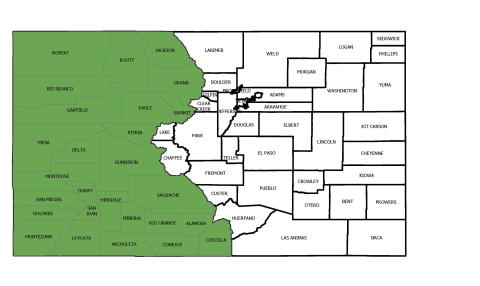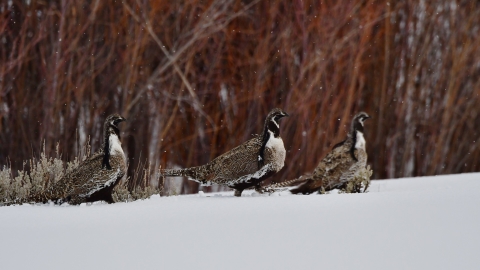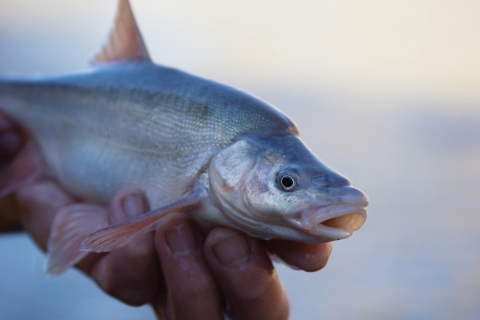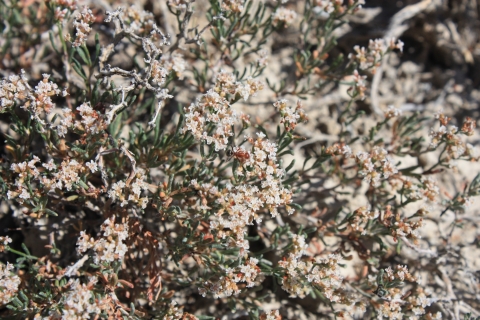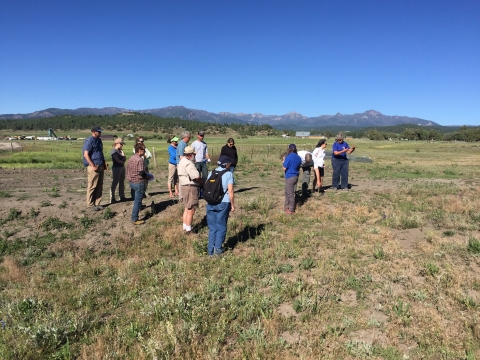About Us
Nationally, the U.S. Fish and Wildlife Service is the principal federal agency responsible for administering the Endangered Species Act (ESA). The Colorado Ecological Services Field Office implements those ESA responsibilities for Colorado. Using the best available science, our Ecological Services personnel work with federal, state, Tribal, local, and non-profit stakeholders, as well as private landowners, to avoid, minimize, and mitigate threats to vulnerable species and habitat. We also conduct oil spill and other environmental contaminant assessment and response activities, promote invasive species invasive species
An invasive species is any plant or animal that has spread or been introduced into a new area where they are, or could, cause harm to the environment, economy, or human, animal, or plant health. Their unwelcome presence can destroy ecosystems and cost millions of dollars.
Learn more about invasive species management and habitat restoration actions, and coordinate with other federal agencies to ensure fish and wildlife impacts are considered during the planning and construction of projects.
The Eastern Colorado Field office, located in Lakewood, serves the Front Range and eastern Colorado. The Western Colorado Field Office, located in Grand Junction, serves the West Slope and western Colorado. Please see the map below for each office’s jurisdiction. While each office serves a different geographic area, the field offices work together for conservation of vulnerable species and habitat across the state.
What We Do
The conservation of Colorado's most imperiled species is at the heart of our offices' work. We administer the Endangered Species Act by evaluating the impact of various land and water development projects on Colorado's vulnerable species and habitats, by working to recover listed species, and by facilitating alternative ways to conserve species and habitat in addition to potential listing under the ESA. All of our work is done in conjunction with partners, including state and federal agencies, local governments, conservation entities, and with the Tribal and private landowners of Colorado.
Our Organization
Our Species
The Colorado Ecological Services Field Offices are responsible for about 40 species that are federally listed as threatened or endangered, or are under review for listing, throughout the state.
Learn more about the species that are the focus of our conservation efforts.
Projects and Research
Working with partners to conserve Colorado's rare plants and animals is the core of what we do. Learn more about some of our efforts.
Get Involved
We have limited staff to cover large geographic areas; therefore, partnering with others is the foundation of our work. Whether it be funding research, coordinating on-the-ground conservation efforts, or shepherding the next generation of conservation leaders - there may be opportunities for you to get involved conserving some of the rarest species and special habitats of Colorado, either with us or one of our partners.







